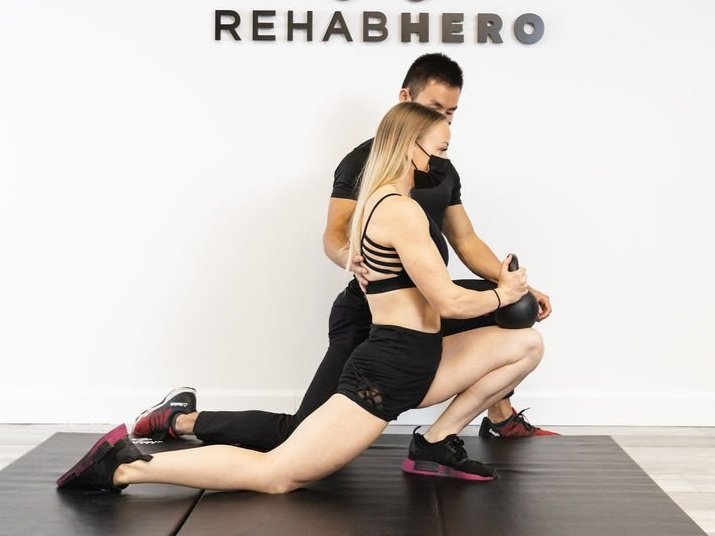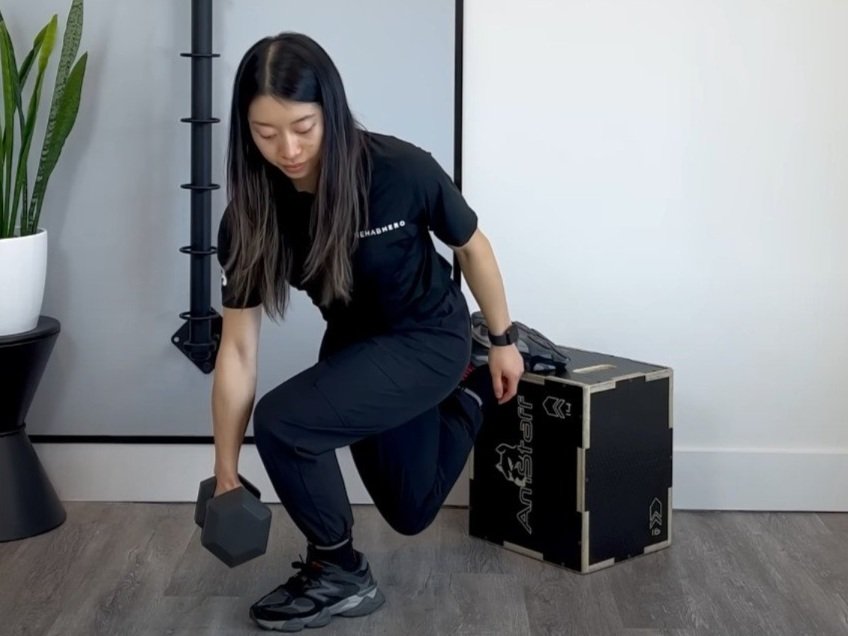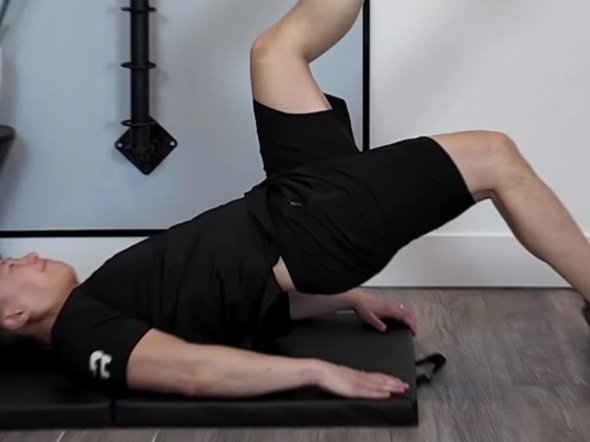What Is Jumper’s Knee?
What is Patellar Tendonitis or Jumper’s Knee
Patellar tendonitis, often referred to as Jumper’s Knee, is a degenerative condition seen in a variety of populations who are prone to excess stresses being loaded through the patellar tendon. This may include athletes who repeatedly jump, such as volleyball and basketball players, individuals with rapid changes in directional acceleration such as soccer or rugby players, and even fitness enthusiasts who are lifting a higher volume of weight than their bodies are adapted for.
Jumper’s Knee Symptoms
The most common symptom is a dull, aching pain localized to the inferior pole of the kneecap where the tendon is attached, which may be further aggravated with sprinting, squatting, or jumping based movements.
Causes and Risk Factors
External risk factors that may contribute to the onset of pain may include a drastic increase in training volume, load progression, or playing time in a sport. A sudden change in footwear or training surface (i.e., competing on cement versus hardwood floors) also changes the pattern of loading through the patellar tendon which may leave individuals more susceptible to injury.
A variety of internal risk factors can also contribute to this condition which may include excessive foot pronation (flat feet), weakness of the hip musculature, limited ankle mobility, reduced flexibility of the quadriceps and hamstrings, and a higher BMI. Essentially, any biomechanical deficit that impairs the alignment of the lower extremities will affect its ability to efficiently absorb shock. This results in excess loads transmitted through the patellar tendon which may ultimately lead to the onset of Jumper’s Knee
Stages of Tendinopathy
It is currently thought that tendinopathies exist along a continuum with 3 related stages:
Stage 1 – Reactive Tendinopathy: this phase results from a recent tensile overload of the tendon. The overall collagenous integrity of the tissue remains largely unchanged and may be temporarily thickened to better withstand stress. With adequate recovery and light, pain-free activity, the tendon can revert to its original state with minimal complications.
Stage 2 – Tendon Disrepair: if a reactive tendinopathy continues to be loaded in the absence of adequate rest, a state of disrepair occurs. This stage is characterized with further degeneration of the cell matrix, separation of collagen fibers, and a higher degree of tissue thickening that will be visible on MRI or ultrasound imaging. Increased circulation and nerve growth to the area may also result in increased pain sensitivity. It is important to receive a comprehensive assessment from a qualified healthcare practitioner to diagnose this stage of tendinopathy. An emphasis on load management and rehabilitative exercises will be important to prevent further deterioration.
Stage 3 – Degenerative Tendinopathy: if left unchecked, a tendinopathy can progress to this final stage of the continuum which is characterized by extensive disorganization of tendinous fibers, increased cell death, and the replacement of mature, type 1 collagen with weaker, immature type 3 fibers. It is crucial to avoid progressing the tendon to this state as the tissue is now structurally compromised. With a poorer tolerance of withstanding normal everyday loads, the tendon has an increased risk of rupture.
Depending on which stage you are in, recovery time can vary greatly.
Jumper’s Knee Vs. Runner’s Knee
Both terms are used interchangeably by many healthcare practitioners. They are both essentially patellar tendinitis.
Jumper’s Knee Vs. Osgood-Schlatter Disease
Jumper’s Knee is an issue with the patellar tendon itself which inserts onto the tibial tuberosity. Osgood Schlatter’s Disease is an issue with the tibial tuberosity that occurs with chronic overload and inflammation of the bony structure. Common characteristics of OSD include bony overgrowth of the tibial tuberosity and episodic pain. OSD often occurs in between the ages of 10-22 due to the immaturity of bones and resolves once full bone maturity has been reached.
How To Prevent Injury
Jumper’s knee is an overuse condition and can be prevented with careful monitoring of activity levels. Making sure that the knees get adequate rest between bouts of exercise will be essential in preventing this injury from occurring. Generally speaking, it is not recommended to have multiple back to back high intensity training days in order to allow your tissues to recover.
Some Treatment Options
Treating tendinopathies ultimately comes down to finding the proper balance of tissue recovery and load management. Contrary to popular belief, if you have a stage 2 or 3 tendinopathy, utilizing prolonged rest worsens your prognosis. In the absence of healthy stresses being placed through the tissue, the tendon quality remains stagnant or even further degenerates. The result is a vicious cycle of activity-aggravated pain, inactivity, and a new cycle of symptom exacerbation when that same activity is repeated.
One of the most effective interventions researched thus far is a rehab program focused on progressive strengthening of the affected tissues and muscle. By focusing on slow, controlled repetitions, while utilizing gradually heavier loads, the tendon adapts by replacing weaker, randomly aligned collagen fibers, with the stronger, optimally aligned type 1 variant. By emphasizing the various squat, lunge, and deadlift variations in your training, in conjunction with adequate recovery periods, you will optimize tissue resilience, decrease risk of re-injury, and ultimately return to your favourite activities pain-free. Jumper’s Knee exercises will include strengthening the quadriceps, hamstrings, hip and leg.
Other complementary treatment strategies that may be valuable include manual therapy, joint mobilizations, movement training, and acupuncture. These conjunct approaches can help by minimizing pain, reducing muscular tightness, promoting better body mechanics, and increasing the efficiency of shock absorption.
How Physiotherapists and Chiropractors can help
Being assessed and treated by a licensed physiotherapist or chiropractor can greatly accelerate the recovery process. Your clinician will be able to accurately identify the source of your pain, relevant mobility limitations, and any compensatory movement patterns that contribute to the tendonitis using a gambit of Jumper’s Knee tests. They will help create an individualized exercise program that addresses all aspects of your performance and be there to guide you through every movement safely and effectively. A combination of manual therapy and joint mobilizations will also be provided to restore motion to your muscles and joints. In addition, your clinician will also provide the necessary education to help monitor your recovery and prevent reinjury from occurring. If needed, they will recommend other treatment options such as a Jumper’s Knee Brace or tape to help you get through the day.
Contact us if you are suffering from knee pain or any other musculoskeletal issue. You can also click here to book in directly online with an experienced Rehab Hero chiropractor or physiotherapist.
You can watch this short video on quadriceps tendinitis by Toronto chiropractor Dr. David Song for additional information:
We also have a video for patellar tendinitis made by Markham chiropractor Dr. David Song:
























